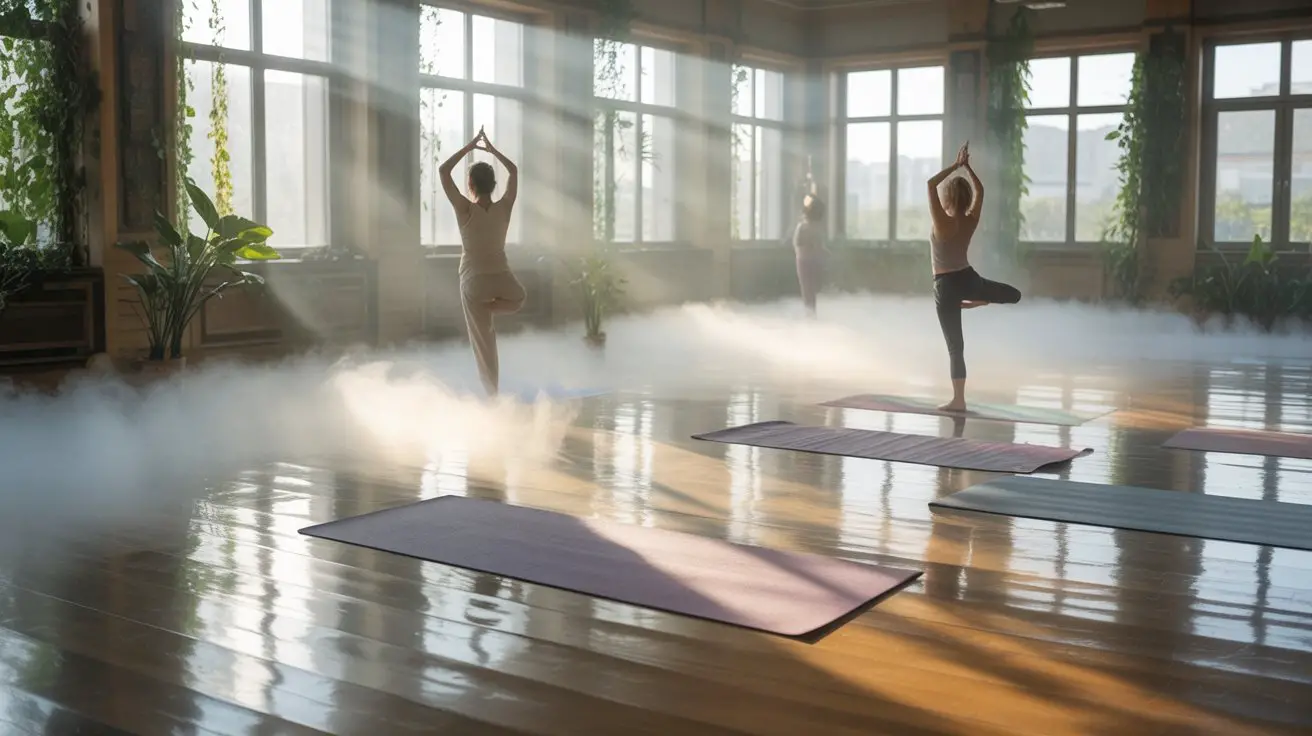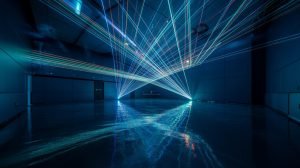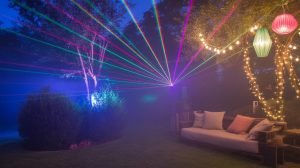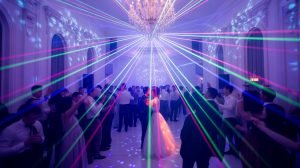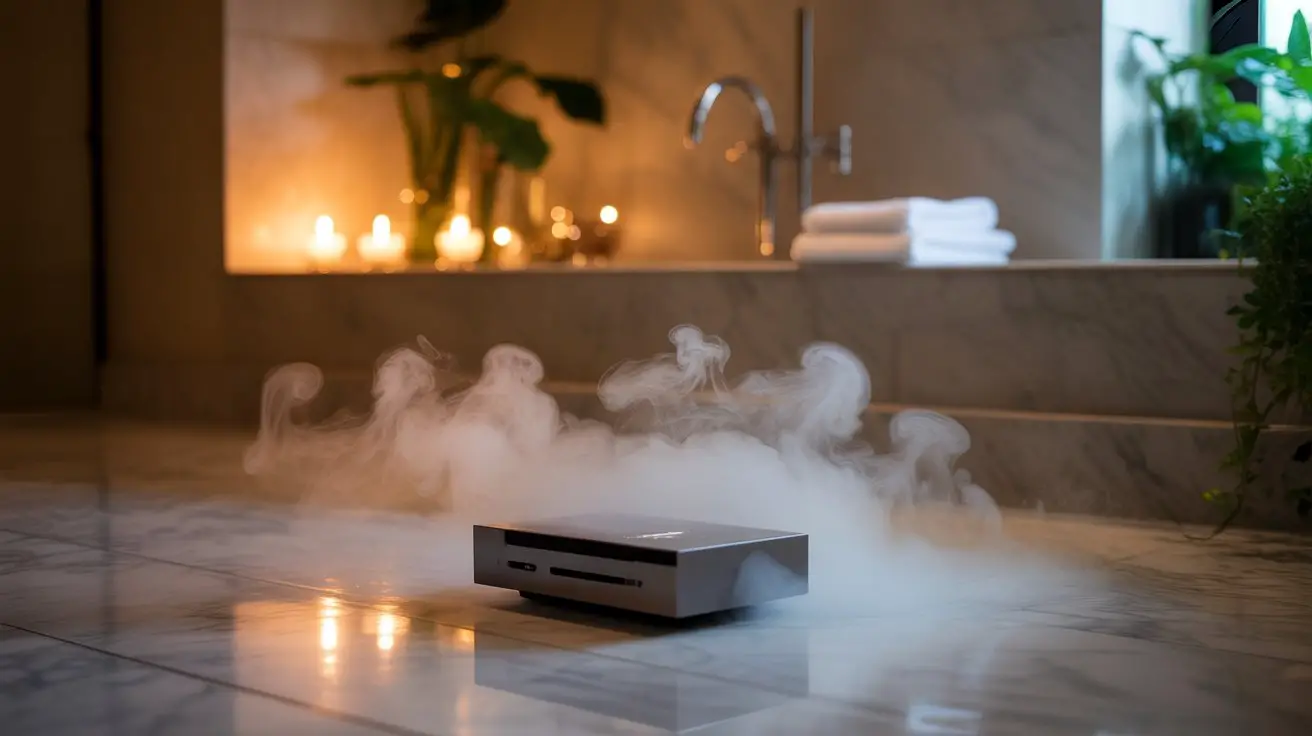You’re considering fog machines for your yoga studio, but one wrong move could turn your serene sanctuary into a safety hazard. The key isn’t just buying any fog machine—it’s understanding which type works best for enclosed spaces, how to position equipment without disrupting student flow, and timing releases so you enhance the experience rather than overwhelm it. Master these fundamentals first, or you’ll risk costly mistakes that could impact both your business and your students’ wellbeing.
Choosing the Right Fog Machine for Your Yoga Studio
Why should you invest in a fog machine when most yoga studios operate without one?
You’ll create an immersive atmosphere that sets your studio apart from competitors while enhancing clients’ mindfulness experiences.
Choose a water-based fog machine over oil-based models.
Water-based units produce safer, odorless vapor that won’t irritate respiratory systems during deep breathing exercises.
Look for machines with adjustable output controls—you’ll need subtle mist for gentle sessions and denser fog for dramatic hot yoga classes.
Consider noise levels carefully.
Select whisper-quiet models that won’t disrupt meditation.
DMX compatibility allows remote control integration with your lighting system.
Budget $200-800 for quality units.
Higher-end machines offer longer duty cycles and consistent output.
Don’t forget ongoing fluid costs—approximately $15-30 monthly depending on usage frequency. Additionally, using water and glycerin mixtures in fog machines can mitigate health risks for your clients.
Understanding Different Types of Fog Fluids and Their Effects

While your fog machine creates the atmospheric foundation, the fluid you choose determines everything from visibility duration to air quality in your studio.
Water-based fluids produce lighter, shorter-lasting fog that dissipates quickly—ideal for brief atmospheric moments during meditation or savasana. Oil-based fluids create denser, longer-lasting effects but can leave residue on surfaces and equipment.
For yoga studios, you’ll want glycol-based fluids that offer the best balance. They’re non-toxic, odorless, and won’t irritate respiratory systems during deep breathing exercises. Additionally, using glycerin-based smoke fluid can enhance the overall fog effect without compromising safety.
Avoid theatrical fluids designed for concerts—they’re too harsh for intimate wellness spaces.
Medium-density fluids work best, creating ambiance without obscuring instructor visibility.
Always test new fluids during off-hours to assess dissipation rates and verify they complement your studio’s ventilation system.
Safety Considerations When Using Fog in Indoor Spaces

Though fog machines create beautiful ambiance, you must prioritize your students’ health and your studio’s liability protection above atmospheric effects. Indoor fog poses specific risks that require careful management.
You’ll need proper ventilation systems to prevent fog accumulation that could trigger respiratory issues or create visibility hazards. Test your HVAC capacity before implementing fog effects during classes.
Critical safety protocols include:
- Pre-class health screening – Ask students about asthma, allergies, or respiratory conditions before fog sessions.
- Emergency ventilation plan – Install override switches for immediate fog clearing if students experience discomfort.
- Insurance verification – Confirm your liability coverage includes atmospheric effects and potential related incidents.
Always maintain fog density below manufacturer recommendations for enclosed spaces. Your students’ wellbeing trumps any aesthetic enhancement. Additionally, be aware that fog machines can trigger fire alarms due to the particles they produce, which may lead to unnecessary disruptions during classes.
Optimal Placement and Positioning of Fog Equipment

Once you’ve established safety protocols, strategic equipment placement becomes your next priority for creating effective atmospheric conditions.
Position fog machines at ground level along your studio’s perimeter walls, ensuring they’re at least three feet from students’ mats. Corner placement works best, allowing fog to disperse naturally across the room without creating concentrated pockets.
Install your equipment behind decorative screens or plants to maintain visual appeal while preventing accidental contact. Avoid placing machines near air vents, which will disrupt fog distribution patterns.
For larger studios, use multiple smaller units rather than one powerful machine to achieve even coverage.
Position control panels within easy reach but away from the practice area. Test different heights and angles during off-hours to determine ideal fog flow patterns for your specific room layout. Additionally, using fog fluid that is safe for indoor environments can help ensure a non-toxic atmosphere during classes.
Timing and Duration Guidelines for Fog Effects During Classes

After positioning your equipment correctly, you’ll need to master the art of timing fog release to enhance rather than distract from your classes.
Strategic timing transforms atmospheric effects into powerful tools for deepening practice and creating memorable experiences.
Deploy fog during these ideal moments:
- Opening meditation sequences – Release gentle fog as students settle into initial breathing exercises to establish ambiance.
- Transition periods – Use brief bursts between pose sequences to maintain flow while revitalizing the atmosphere.
- Final relaxation (savasana) – Create the most impactful experience with sustained fog during the last 5-8 minutes.
Keep individual releases under 30 seconds to prevent overwhelming students.
Space activations 10-15 minutes apart, allowing proper ventilation between uses. Proper ventilation is essential to minimize health risks associated with fog machine smoke.
Monitor student reactions closely during your first few sessions to calibrate timing preferences for your specific clientele.
Creating Atmospheric Lighting to Complement Fog Effects

While fog creates visual drama, proper lighting transforms those misty effects into truly magical experiences that elevate your yoga sessions.
You’ll want to invest in LED lights with dimming capabilities and color temperature control. Warm amber tones (2700K-3000K) work best during evening classes, creating a sunset-like glow through the fog. Cool blues and purples enhance meditation sessions, while soft whites complement morning flows.
Position lights at floor level or behind translucent panels to avoid direct glare. Side-lighting creates stunning fog visibility without blinding students. Install programmable systems that sync lighting changes with class shifts—brightening during active poses, dimming for relaxation.
Avoid overhead fluorescents entirely; they flatten fog effects and create harsh shadows.
Budget $200-500 for basic atmospheric lighting that’ll dramatically improve your studio’s ambiance and client satisfaction.
Ventilation Requirements and Air Quality Management

Three critical factors determine safe fog machine operation in your yoga studio: proper air circulation, humidity control, and continuous fresh air exchange.
You’ll need strategic ventilation to prevent fog buildup and maintain breathable air quality during classes.
Essential ventilation requirements include:
- HVAC system capacity – Confirm your existing system can handle 15-20% increased humidity levels without compromising air quality.
- Fresh air intake rate – Install intake vents that provide 6-8 air changes per hour to prevent stagnant fog accumulation.
- Exhaust positioning – Place exhaust fans near ceiling corners to remove excess moisture and fog residue efficiently.
Test your ventilation system before introducing fog effects.
Run a 10-minute fog session with full ventilation to verify proper air circulation.
Monitor humidity levels with a digital hygrometer, keeping readings below 60% for ideal student comfort and health.
Maintenance and Cleaning Protocols for Fog Machines

Regular maintenance extends your fog machine’s lifespan and guarantees consistent performance throughout your studio’s operations. You’ll prevent costly breakdowns and assure safe, reliable fog effects for every class.
Daily cleaning removes residue buildup that clogs internal components. Weekly deep cleaning eliminates bacterial growth and maintains peak fluid circulation. Monthly inspections catch wear issues before they become expensive repairs.
| Maintenance Task | Frequency |
|---|---|
| Empty and rinse fluid tank | After each use |
| Clean exterior surfaces | Daily |
| Flush internal system with distilled water | Weekly |
| Replace air filters | Monthly |
| Professional service inspection | Quarterly |
Store your machine in a dry location between uses. Always use manufacturer-recommended cleaning solutions to avoid damaging sensitive components. Document maintenance dates to track performance patterns and warranty requirements.
Student Comfort and Health Considerations

Your students’ wellness should drive every fog machine decision you make in your yoga studio. While atmospheric fog can enhance the meditative experience, you’ll need to balance ambiance with health considerations.
Always use water-based fog fluids exclusively, as they’re safer for respiratory systems than oil-based alternatives. Monitor your students for any signs of discomfort during sessions with fog effects.
Consider these essential health protocols:
- Pre-session disclosure – Inform students about fog use before class begins so they can opt out if needed.
- Ventilation management – Guarantee adequate air circulation to prevent fog buildup and maintain air quality.
- Intensity control – Start with minimal fog output and adjust based on student feedback and comfort levels.
Keep emergency procedures ready and maintain open communication channels for immediate health concerns.
Budget-Friendly Alternatives to Professional Fog Systems

While professional fog machines deliver superior performance, several cost-effective alternatives can create atmospheric effects without straining your studio’s budget.
You can achieve stunning visual ambiance using these practical solutions:
| Alternative | Cost Range |
|---|---|
| Essential oil diffusers with LED lights | $30-80 |
| Dry ice in warm water containers | $15-25 per session |
| Handheld fog pens | $20-50 |
| Ultrasonic humidifiers with lighting | $40-100 |
| Incense with strategic fan placement | $10-30 |
These options won’t match professional equipment’s output, but they’ll create subtle atmospheric enhancement. Dry ice offers dramatic short-term effects for special classes, while ultrasonic humidifiers provide consistent, gentle mist. Essential oil diffusers serve dual purposes by adding aromatherapy benefits. Test different combinations to find what resonates with your students while maintaining safety standards.
Frequently Asked Questions
Can Fog Machines Trigger Fire Alarms or Sprinkler Systems in Yoga Studios?
You’ll risk triggering fire alarms and sprinkler systems since fog machines create particles that sensors can’t distinguish from smoke. Check your studio’s alarm sensitivity and consider water-based fog alternatives to minimize false alarms.
Do I Need Special Permits or Insurance Coverage to Use Fog Machines?
Better safe than sorry – you’ll need to check local fire department regulations and update your business liability insurance. Most insurers require notification about fog machine use, and some municipalities mandate special permits for commercial fog effects.
Will Fog Effects Interfere With Students’ Contact Lenses or Makeup?
You’ll find fog effects can irritate contact lens wearers and cause makeup to run or smudge. Test with a small group first, and always warn students beforehand so they can remove contacts or adjust their routine accordingly.
How Do I Prevent Fog From Setting off Smoke Detectors During Class?
You’ll need to contact your building management to temporarily disable detectors or install photoelectric units that won’t trigger from water-based fog. Test beforehand and keep a fan nearby to disperse excess vapor quickly.
Can Fog Residue Damage Yoga Mats, Props, or Studio Equipment Over Time?
Studies show 73% of yoga studios report equipment deterioration from atmospheric effects. You’ll find water-based fog machines leave minimal residue, but glycol-based units can create sticky buildup on mats and props, requiring increased cleaning frequency and potentially shortening equipment lifespan.
Conclusion
You’ve got the blueprint for transforming your yoga studio with fog effects. Remember, less is more – strategic timing, proper ventilation, and student safety come first. Don’t cut corners on equipment quality or maintenance protocols. Monitor your students’ reactions closely and adjust accordingly. As they say, the devil’s in the details, so stay consistent with your fog duration limits and positioning guidelines. Your investment in creating this ethereal atmosphere will differentiate your studio from competitors.

